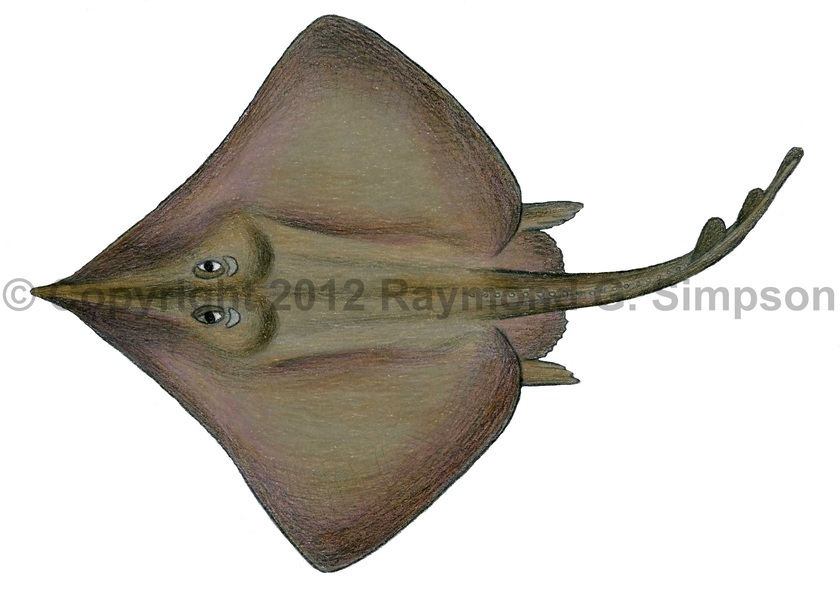
Common Name
Argentine Skate
Year Described
Díaz de Astarloa, Mabragaña, Hanner & Figueroa, 2008
Identification
Disk spade-shape with a concave anterior margin. Snout very long (23% TL). Pectoral fins angular with a blunt tip. Anterior pelvic fin lobe about as long as the posterior lobe. Tail is ~47% of TL, relatively thin, and has low skin folds on both sides. There are two dorsal fins, separated from each other by a distance less than one half of first dorsal base. The caudal fin consists of a moderately developed lobe. Lower jaw with 34-43 tooth rows.
Body is smooth above, with dermal denticles restricted to the snout. There are several orbital thorns, and 0-1 nuchal thorn on the head. No scapular thorns. No thorns on midline of body anterior to pelvic base. Tail with a single row of 10-24 thorns. One or two thorns present between the dorsal fins. Ventral surface without dermal denticles except for around snout. Interbranchial space without denticles.
Color
Gray-brown to purplish-brown overall, with no dark blotches or spots. Sides of nose not translucent. Ventral surface similar in color to the dorsum. Dorsal fins dark brown. Thorns and lateral tail folds white.
Size
Specimens range from 40.1-93.5cm TL and 29.7-68.3cm disk width.
Habitat
Demersal from 87-142m.
Range
Southwestern Atlantic: central to southern Argentina.
References
Díaz de Astarloa, J.M., E. Mabragaña, R. Hanner and D.E. Figueroa. 2008. Morphological and molecular evidence for a new species of longnose skate (Rajiformes: Rajidae: Dipturus) from Argentinean waters based on DNA barcoding. Zootaxa 1921:35-46.
Last, P.R., White, W.T., Carvalho, M.R. de, Séret, B., Stehmann, M.F.W & Naylor, G.J.P (Eds.). 2016. Rays of the World. CSIRO Publishing, Melbourne.
Other Notes
The related Zearaja chilensis has more thorn rows on a shorter tail, and a different color pattern.